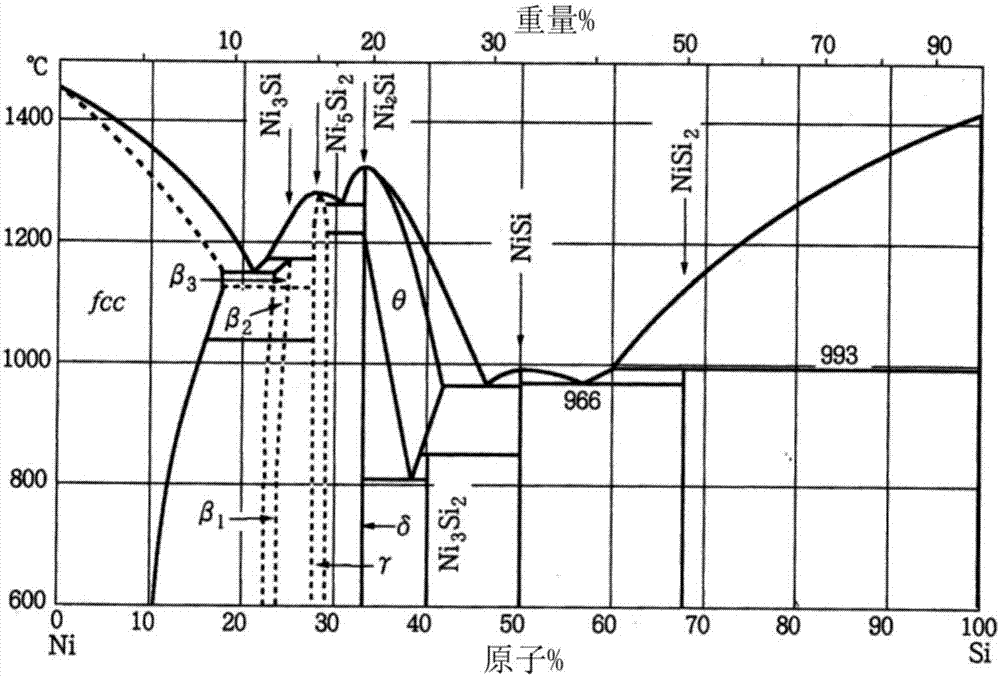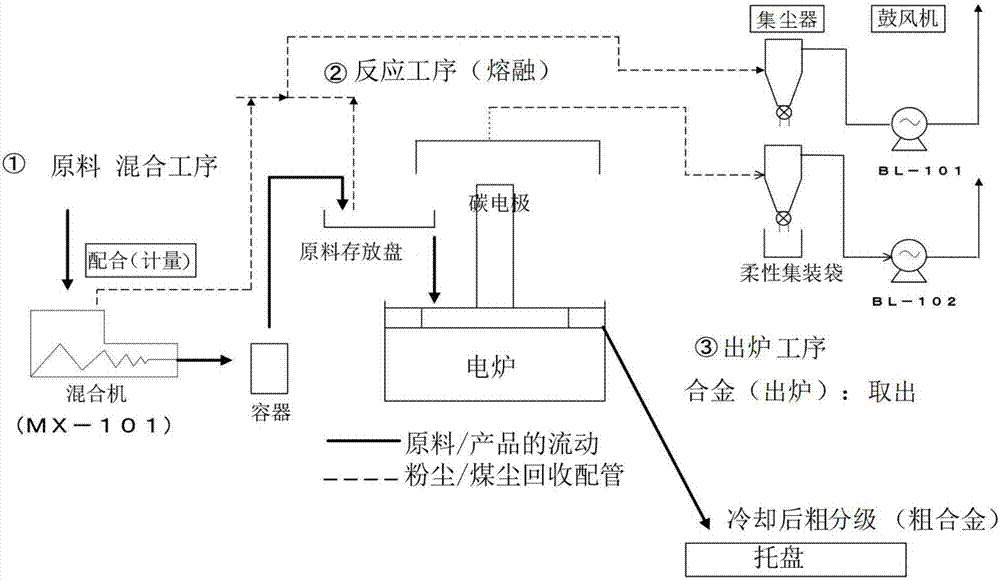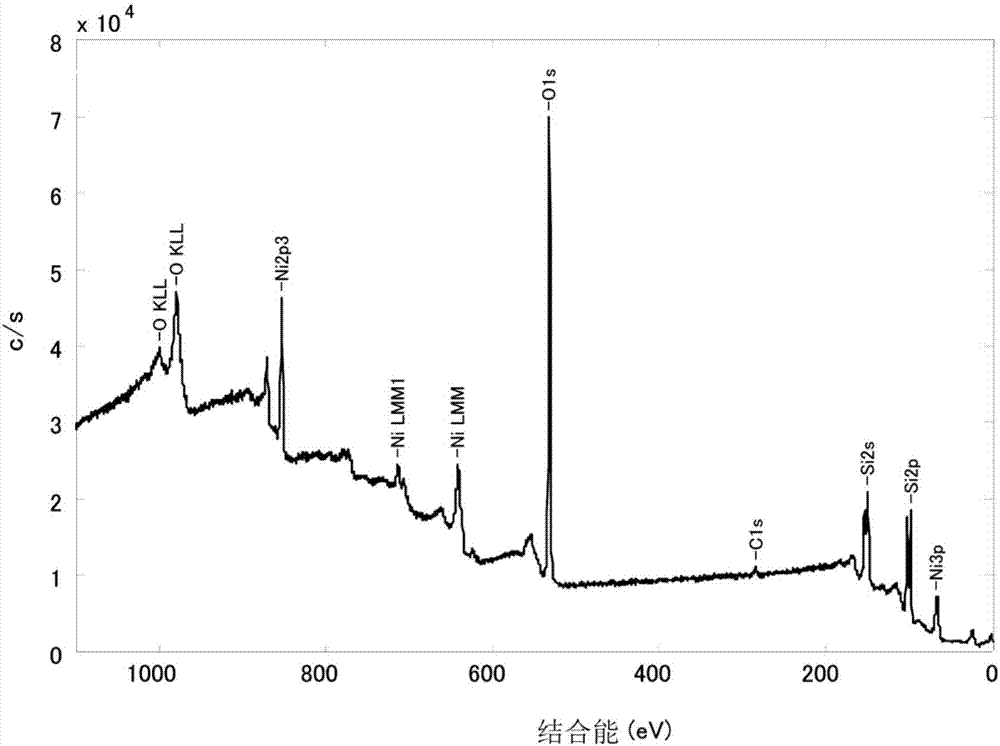Lithium Occlusion/Release Material, Electrode, Lithium Ion Secondary Battery, And Method For Manufacturing Lithium Occlusion/Release Material
A technology for releasing materials and manufacturing methods, which is applied in secondary batteries, nanotechnology for materials and surface science, battery electrodes, etc. problem, to achieve the effect of excellent charge/discharge characteristics
- Summary
- Abstract
- Description
- Claims
- Application Information
AI Technical Summary
Problems solved by technology
Method used
Image
Examples
Embodiment 1
[0125] With respect to 100 kg of new nickel as a nickel source as a raw material, 306.6 kg of silica as a silicon source and 184.0 kg of charcoal as a carbon source are used. figure 2The method described in the production flow chart shown produces a lithium occlusion-release material. The composition of the molten material was managed so that the atomic ratio of Fe to Ni in the lithium storage-release material (Fe / Ni ratio) was 0.063 or less. In other examples and comparative examples, the management of the Fe / Ni ratio of the lithium occlusion-release material was also made the same. Cooling of the molten mass was performed by cooling from the molten state to 50° C. over 3 hours. The average cooling rate in this case was 0.1°C / sec. Thus, a lithium storage-release material having an atomic ratio of silicon to nickel (Si / Ni ratio) of 3.0 was obtained in a yield of 99%.
[0126] (Measurement example 1) X-ray photoelectron spectrum
[0127] The lithium occlusion-release mater...
Embodiment 2
[0150] With respect to 100 kg of new nickel as a nickel source as a raw material, 255.5 kg of silica as a silicon source and 153.2 kg of charcoal as a carbon source are used. figure 2 The method described in the production flow chart shown produces a lithium occlusion-release material. Cooling of the molten mass was performed by cooling from the molten state to 50° C. over 3 hours. The average cooling rate in this case was 0.1°C / sec. Thus, a lithium storage-release material having an atomic ratio of silicon to nickel (Si / Ni ratio) of 2.5 was obtained in a yield of 99%.
Embodiment 3
[0152] Using 408.9 kg of silica as a silicon source and 245.3 kg of charcoal as a carbon source with respect to 100 kg of new nickel as a nickel source as a raw material, use figure 2 The method described in the production flow chart shown produces a lithium occlusion-release material. Cooling of the molten mass was performed by cooling from the molten state to 50° C. over 3 hours. The average cooling rate in this case was 0.1°C / sec. Thus, a lithium storage-release material having an atomic ratio of silicon to nickel (Si / Ni ratio) of 4.0 was obtained in a yield of 99%. The size of the Si phase measured in the same manner as in Measurement Example 3 was 84 nm.
PUM
| Property | Measurement | Unit |
|---|---|---|
| diameter | aaaaa | aaaaa |
Abstract
Description
Claims
Application Information
 Login to View More
Login to View More - R&D
- Intellectual Property
- Life Sciences
- Materials
- Tech Scout
- Unparalleled Data Quality
- Higher Quality Content
- 60% Fewer Hallucinations
Browse by: Latest US Patents, China's latest patents, Technical Efficacy Thesaurus, Application Domain, Technology Topic, Popular Technical Reports.
© 2025 PatSnap. All rights reserved.Legal|Privacy policy|Modern Slavery Act Transparency Statement|Sitemap|About US| Contact US: help@patsnap.com



